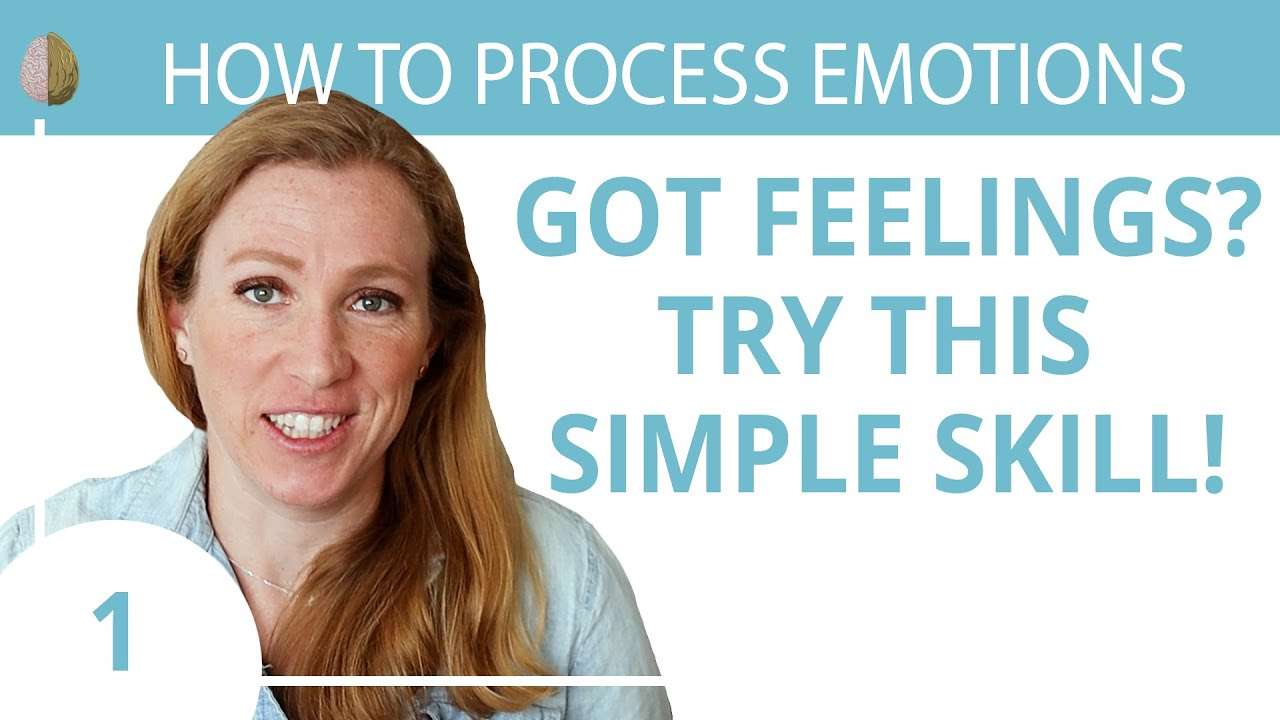Let’s start by making a little analogy- We’re going to compare emotion processing to a fish processing factory. Every day trucks arrive carrying piles of the latest catch. They come with Salmon, Halibut, Crab, Lobster, Tilapia and other delicious seafood. At our processing factory we need to check in the trucks, unload the trucks, cut the seafood into usable portions, throw out the unusable parts, package the seafood, label it and send it out to stores where it can be used to make delicious salmon fillets and sushi and butterfly shrimp. Sounds delicious, if you like seafood.
Now remember this is an emotional processing analogy, and some emotions, just like fish, can be quite unpleasant, stinky to say the least. So let’s say that one sunny day something goes wrong. A truck arrives full of fish that are too big for our machines to handle. We may try to run them through anyway, but then our machine breaks down. Because the machines aren’t working, the workers leave for the day because they don’t know what to do- they don’t know how to fix the machine.
Now we’ve got trucks loaded with unprocessed fish sitting outside but we can’t process them, and more trucks are coming in but can’t be processed either.
You can see where this is going right? The fish start to rot. You and your workers are starting to feel stressed out. “What’s going to happen with our factory? With our jobs?” So we try to cope with the stress in the best way we know how. Maybe we use one of our three skills, we vent to a coworker about how much we hate processing fish, or we leave and go to lunch, but basically we just try not to think about those trucks of fish.
Pretty soon the trucks become more and more stinky, oozy, even terrifying. The longer we leave them, the easier it is to avoid them and the harder it is to face them. Maybe we avoid the trucks for days, weeks, years… At some point the fish that had the potential to be purposeful and delicious becomes rotting and putrid.
At this point we don’t want to go anywhere near those trucks of fish, they seem too terrible to face or approach. But avoiding the trucks seriously messes up our lives. We can’t work, because other trucks can’t get in. We can’t process seafood, our employees are out of work and the grocers are out of fish. Our processing factory and or rather our life is not working.
One day we drive up to the factory and decide “Something needs to change!!!” We get out the big hoses, the galoshes, the shovels, and we dive in. We clean out the trucks. It’s painful, stinky, terrifying, but we get through it. Maybe we need to ask for help, maybe we have to find someone who knows how to fix the broken machine or we need some extra support to finish the cleaning. We get our factory back in order, and decide that to prevent that from happening, we need to process each truck as it arrives or soon after.
And soon, as each truckload of seafood comes in, we check it in, we unload the trucks, cut the seafood into usable portions, throw out the unusable parts, package the seafood, label it and send it out to stores where it can be used to make delicious salmon fillets and sushi and butterfly shrimp. And we’re back in business. Our factory is running smoothly, turning a profit, and we feel pretty good about life.
And this is what the emotion processing looks like,
when big emotions come rolling in, we notice them, name them, pause and decide what to do with them. We cut out that faulty thinking that makes things worse, and we work with our body to calm down, and we break the emotions down into smaller pieces and explore what they are, and then, we decide what to do with them, whether to act on them, make some changes, or just accept them as a beautiful part of the process of being alive.
But
sometimes something goes wrong
.
Sometimes our emotions get backed up
. Maybe just like if you have too many trucks of fish, maybe you get overwhelmed with too many emotions to process at once. Maybe you go through some trauma that’s too big to deal with at once. Or maybe work is too stressful and overwhelming, or maybe you’ve got something biological that goes wrong, you’re not sleeping well or your body gets sick. And it just feels too overwhelming to deal with the truckload of emotions that keep coming in.
Emotions that had been meant to help you, become overwhelming and seem to be the thing ruining your life. Sadness takes over your day-to-day, or Anxiety stops you from doing important things.
So you avoid your feelings. You try not to think about them. Maybe you use drugs or food to feel good for a while. Maybe you avoid your feelings by keeping too busy or by blaming everyone else. And this leads to the emotions building up.
And on top of the old trucks of emotions, new trucks arrive every day.
Doris started singing and laughing again for the first time in years:
“Your (course) on Processing Emotions is having a profound effect on my life. Quick examples: This morning I caught myself singing- it’s been years.
I have been laughing again! My thoughts are less likely to be dark and sad when using the information you teach. No longer trying to live on just “Hope”. I have added “Action” and what a difference it has made.
Thank you for making these videos available to me. I sing their praises to all family or friends who could benefit from watching them!!” -Doris Kjellevold
Get Started Today!
How to Process Your Emotions: Course Introduction/30 Depression and Anxiety Skills Course.
Name It to Tame It: How to Process Emotions 1/30.
A Nonjudgmental Attitude: The Lie of Positive and Negative Emotions: Process Your Emotions 2/30.
Why Coping Skills Can Make It Worse: How to Process Your Emotions 3/30.
Clean vs. Dirty Pain: Are You Creating Your Own Suffering? How to Process Your Emotions 4/30.
How to Stop Struggling With Anxiety and Intense Emotions 5/30 How to Process Emotions.
Willingness: How to Feel your Feelings 6/30 How to Process Emotions.
Primary Emotions vs. Secondary Emotions – Skill 7/30 How to Process Emotions.
The Mind-Body Connection 8/30 How Emotions Get Trapped in the Body.
How Anxiety Affects the Brain 9/30 How to Recognize and Turn off the Fight/Flight/Freeze Response.
How to Release Emotions Trapped in Your Body 10/30 How to Process Emotions Like Trauma and Anxiety.
Calming Anxiety With Your Body’s Built-in Anti-Anxiety Response 11/30.
How to Turn off the Fear Response 12/30 Create a Sense of Safety.
Coping Skills for Anxiety or Depression 13/30 How to Process Emotions.
How to Turn off the Fight/Flight/Freeze Response With Grounding Skills for Anxiety.
How to Move Past Mental Blocks: 15/30 Remove Mental and Emotional Blocks.
Neuroplasticity: Change How You Feel by Changing How You Think 16/30.
Reframe Your Negative Thoughts: Change How You See the World 17/30 How to Process Emotions.
Cognitive Distortions: Cognitive Behavioral Therapy Techniques 18/30.
How to Change How You Think Cognitive Distortions Part 2.
Intrusive Thoughts and Overthinking: The Skill of Cognitive Defusion 20/30.
Mindfulness for Anxiety A Beginner’s Guide 21/30.
Cognitive Dissonance: Emotion Processing 22/30.
Self-Deception 23/30 The Problem of Not Knowing You Have a Problem.
How to Create the Life You Want, One Small Change at a Time.
Why Trying to Feel Happy Backfires: Purpose vs. Happiness- 25/30 How to Process Emotions.
Fight Depression and Anxiety With Your Core Values 26/30 How to Process Emotions.
Get Rid of Self-Limiting Beliefs 27/30 How to Process Emotions.
A GROWTH Mindset vs. a FIXED Mindset With Mental Health.
How to Stop Beating Yourself Up 29/30 Self-Compassion.
What’s the Core Issue? How to Actually Change 30/30.
THE CHOICE: Act, Accept, or Run Away 31/30 How to Process Emotions- Course Summary .
Mastering the Paradox of Acceptance and Change With Anxiety- Acceptance and Commitment Therapy.
How to Deal With Anxiety – The Step-by-Step Guide.
Ready to change your life? Buy the full, ad-free Emotion Processing course now for only $147:
https://courses.therapyinanutshell.com/emotion-processing?utm_campaign=Jul%2002,%202021&utm_medium=Description&utm_source=p
odcast
We swim through our thoughts like a fish swims through water. We don’t even notice that the way we think colors our view of the world. Or sometimes we do notice thoughts that we don’t like, and then we don’t know what to do with them. Sometimes you fight them or struggle against them, but that doesn’t feel any better. So sometimes you get stuck in an endless loop of overthinking, obsessively struggling against a thought. But that’s not any better, because struggle steals your attention and energy. In this episode you’re going to learn how to get unstuck from your thoughts. You’re going to learn how to look at your thoughts instead of through them. This skill is called cognitive defusion.
Looking for affordable online counseling? My sponsor, BetterHelp, connects you to a licensed professional for $65/week. Try it now for 10% off:
https://betterhelp.com/therapyinanuts…
Learn more in one of my in-depth mental health courses: https://courses.therapyinanutshell.com/?utm_source=podcast&utm_medium=07022021
Support my mission on Patreon:
https://www.patreon.com/therapyinanut…
Sign up for my newsletter: https://www.therapynutshell.com?utm_medium=YTDescription&utm_source=podcast
Check out my favorite self-help books:
https://kit.co/TherapyinaNutshell/bes…
Therapy in a Nutshell, LLC, and the information provided by Emma McAdam are solely intended for informational and entertainment purposes and are not a substitute for advice, diagnosis, or treatment regarding medical or mental health conditions. Although Emma McAdam is a licensed marriage and family therapist, the views expressed on this site or any related content should not be taken for medical or psychiatric advice. Always consult your physician before making any decisions related to your physical or mental health.
In therapy I use a combination of Acceptance and Commitment Therapy, Systems Theory, positive psychology, and a bio-psycho-social approach to treating mental illness and other challenges we all face in life. The ideas from my videos are frequently adapted from multiple sources. Many of them come from Acceptance and Commitment Therapy, especially the work of Steven Hayes, Jason Luoma, and Russ Harris. The sections on stress and the mind-body connection derive from the work of Stephen Porges (the Polyvagal theory), Peter Levine (Somatic Experiencing) Francine Shapiro (EMDR), and Bessel Van Der Kolk. I also rely heavily on the work of the Arbinger institute for my overall understanding of our ability to choose our life’s direction. And deeper than all of that, the Gospel of Jesus Christ orients my personal worldview and sense of security, peace, hope, and love https://www.churchofjesuschrist.org/comeuntochrist/believe
If you are in crisis, please contact the National Suicide Prevention Hotline at https://suicidepreventionlifeline.org/ or 1-800-273-TALK (8255) or your local emergency services.
Copyright Therapy in a Nutshell, LLC —-
Music licensed from www.Bensound.com or Artlist.io Images from Freepik.com (premium license), Pixabay, or Wikimedia commons



